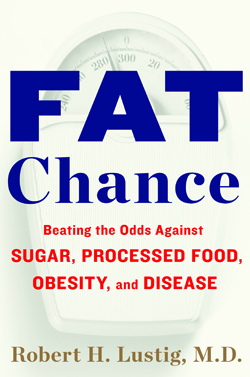The Healthcare Channel
April 5, 2011
Edwards Lifesciences (EW) makes the new minimally invasive implanted aortic valve called the Sapien. It is more advanced in the regulatory pathway than Medtronic is with their CoreValve device. This new class of medical device promises to change the way that millions of people receive treatment for aortic stenosis. (Note: transcatheter aortic valve implantation (TAVI) is not the best term since the valves can be implanted using a trocar in the chest and entering the apex of the heart).
With few publicly traded medical device companies making investors any money, the several-hundred-percent ($20 to $88) improvement in Edwards Lifesciences (EW) has earned a loyal following from Wall Street analysts and investors. The bad economy and fewer insured patients are financially crippling most medical centers. With the safety troubles surrounding drug eluting coronary stents and recent SYNTAX studies showing that CABG is superior to stents in complex disease, the hospitals are also eager for a new effective therapy, such as percutaneous heart valves, to keep the cath labs busy.
Politically, the medical device industry is now a top priority for President Obama, his FDA’s CDRH, and with the Republican Speaker of the House. The high unemployment rate and potential jobs created by the medical device industry are allowing the critics of slow FDA approval of medical devices to have the upper hand in the constant battle with the safety-minded.
All of this could create a perfect storm that might lead to one of the biggest safety disasters in the history of medical devices. The first generation of percutaneous aortic valves have serious design flaws leading to much higher stroke rates than the traditional open-heart surgery. Also, higher complication rates with the femoral artery were seen, but Wall Street and some cardiologists seem dismissive of these problems.
The PARTNER A trial was designed to test whether the percutaneous catheter-loaded valve was non-inferior to traditional open-heart surgery. The study succeeded in showing non-inferiority at 1-year (catheter valve cohort was 24.2% vs. 26.8% in the surgical group (p-value 0.001), and the catheter cohort actually had a lower mortality at the 30-day mark than the open-heart patients (catheter valve 3.4% vs. open-heart-surgery-valve 6.5%, p=0.07). However, the large-French profile of the catheter-loaded valves releasing atherosclerotic debris from the aortic arch and the balloon dilation of the calcified native valve caused a 100% increase in stroke (catheter valve 8.3% vs. open-heart-surgery 4.3%; statistically significance p=0.04). In addition, the major vascular complications caused by the large diameter catheter fitting into the small leg arteries were much more common (11.3% v 3.5%; p<0.01).
For other medical device trials, stroke rates like those have been “show stoppers”. Carotid artery stenting, for example, has never been widely adopted given that Medicare is yet to reimburse for the procedure due to the increased stroke rate in the stented patients compared to traditional surgery. In the elderly sick population studied in the PARTNER trials, the higher stroke rates are being dismissed by most Wall Street analysts and doctors participating in the trials.
Wells Fargo analyst Larry Biegelsen (Outperform rating) wrote ” In our view, the most important outcome from the trial was the numerically lower rate of mortality and major stroke at 1 year for TAVI versus SAVR (26.5% vs. 28.0; p=NS) because this indicates that the slightly higher rate of stroke with TAVI does not lead to poorer overall outcomes for TAVI. We think this will be an important driver for patients to select TAVI over SAVR given the faster recovery time with TAVI (time in the ICU was 5 days with SAVR vs. 3 days with TAVI). We think it’s important to highlight that the TAVI results should improve over time because the trial used a first generation device and 19 of the 26 centers had no prior TAVI experience whereas the surgeons in the trial were probably the best and most experienced in the US and Canada.”
Merrill Lynch analyst Bob Hopkins (Neutral rating) wrote, “The one point of controversy related to relative stroke rates (major stroke rate in the TAVI arm was 2x the surgical group – 5.1% versus 2.4% p value .07). Stroke risk may have an impact on the initial pace of uptake in the high risk surgical patient population studied in PARTNER A, but we see the issue as temporary with no long term implications on the TAVI market opportunity as the absolute stroke rates were low, there was no difference in mortality or mortality plus stroke and there are solid reasons to believe the TAVI stroke rate will fall over time and good reasons to believe the surgical stroke rate will rise as we discuss below.”
Michael Crawford, MD, chief of clinical cardiology at University of California, San Francisco, told the WSJ, “It will definitely change the practice for this disease. As good as surgery is, patients don’t want it.”
Craig R. Smith, MD, who presented the results at the ACC said in a statement reported by Medpage Today, “(TAVI) is the most exciting new treatment for aortic stenosis in the past two to three decades.” Smith is the chief of the Division of Cardiothoracic Surgery at New York-Presbyterian Hospital/Columbia University Medical Center and the study’s co-principal investigator. Columbia is also the home of Marty Leon, pioneer of the Edwards valve.
However, some doctors were concerned by the latest PARTNER A data. In the cardiology blog, CardioExchange (part of the NEJM), Dr. Richard Lange wrote, “TAVI was associated with a higher incidence of stroke, vascular complications, and perivalvular leak, with no mortality or clinical benefit. Yet the lead investigator touts TAVI as an “excellent alternative” to AVR because it was associated with less atrial fibrillation and bleeding. This is an interesting conclusion, since most physicians and patients are more concerned about periprocedural stroke and vascular complications than atrial fibrillation or transfusions. In “high-risk” patients eligible for AVR, is TAVI really a PARTNER or a blind date (“Thanks, but no thanks”)? “
It is important to remember that the PARTNER trials tested a very small subset of patients deemed to be poor surgical candidates. Conclusions cannot be extrapolated to the entire population of aortic stenosis. If the new catheter-based valves were approved, they would certainly be used off-label in patients less sick, just as drug eluting stents (DES) are now used in patients types not tested in pivotal trials. With this real-world usage fueled by financial invectives to doctors and hospitals, what would be the actual increase in strokes seen around the world?
Wall Street financial models forecast more than 300,000 total cases to treat aortic stenosis by the year 2020 with 200,000 being performed by the new catheter-based techniques. The stroke rates seen in PARTNER trials were from the most skilled hands in special cardiac hospitals. Assuming that the lesser trained doctors can somehow perform the procedures as well, at a total stroke rate of more than 8%, that translates into 16,000 strokes in very sick patients. With a 100% delta in the Kaplan curves, that means approximately 8,000 strokes per year would be attributable to the new valves, with no offsetting clinical benefit in mortality.
The other important consideration is the extremely short follow up in the PARTNER trials. Traditional prosthetic heart valves undergo the longest follow up, most extreme scrutiny, of any medical device before The FDA grants approval, and for good reason. If an aortic or mitral valve fails, rapid death ensues, as seen in the Bjork-Shiley debacles decades ago.
Cardiologists, in stark contrast to cardiac surgeons, are accustomed to having new stents and devices approved with only one year of follow up data. One year proved to be woefully inadequate for drug eluting stents. It was only after 12-months that the insidious deadly problem of late stent thrombosis began to rear its ugly head.
Prior to the Johnson and Johnson Cypher drug eluting stent being approved, Marty Leon displayed a slide at his TCT cardiology meeting that showed the Nike swoosh logo, and beneath it read “Just Stent It”, implying that all coronary artery disease should be treated by stents rather than CABG surgery. The interventional cardiology community was drunken with excitement. Coupled with a rare Medicare reimbursement decision even prior to an FDA approval, drug eluting stents proceeded to be used massively in off-label indications. Virtually all coronary interventions resulted in an expensive, untested, drug eluting stent. It was only after millions of patients were stented that the late stent thrombosis safety problem became known. Along with the SYNTAX and COURAGE trials that showed no benefit from DES over medical therapy or CABG, the usage of DES decreased, but only after millions of patients were harmed.
History seems to be repeating itself, but in a more dangerous way. The same clinical investigators have pioneered the catheter-based aortic valves. The same alliance of industry, medical societies, and academic thought leaders, is trying yet again to have a new cardiac device rapidly approved with short follow up data. This time, the consequences of failure are even more deadly.




